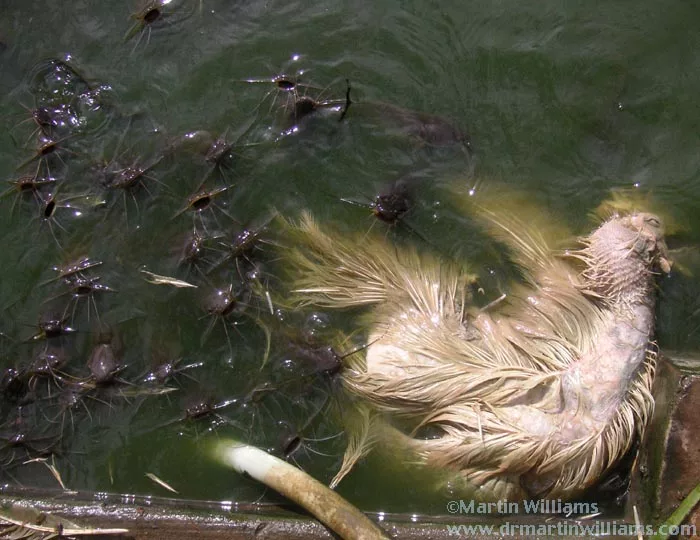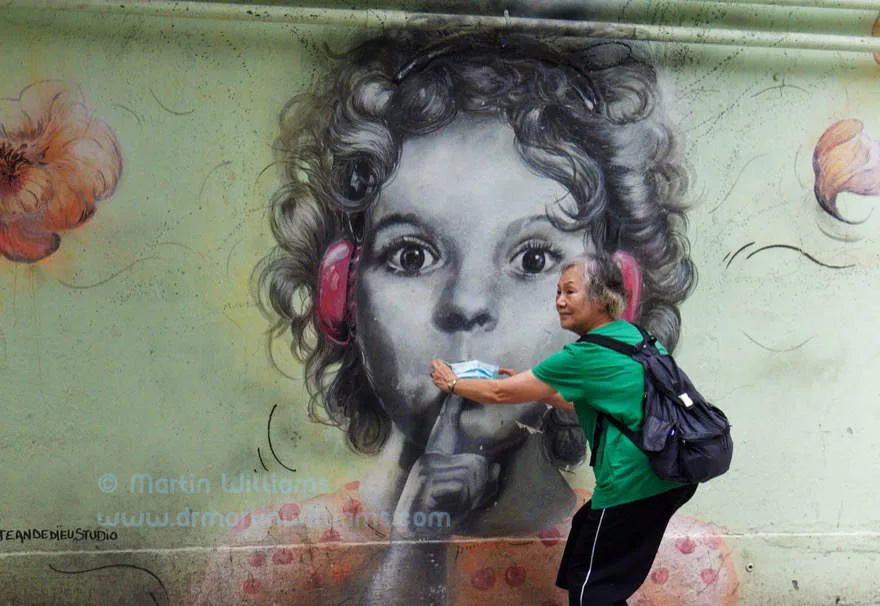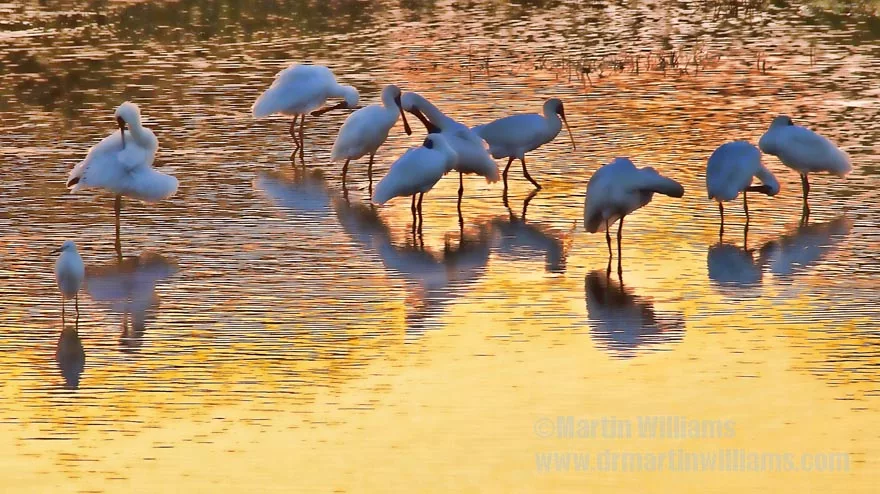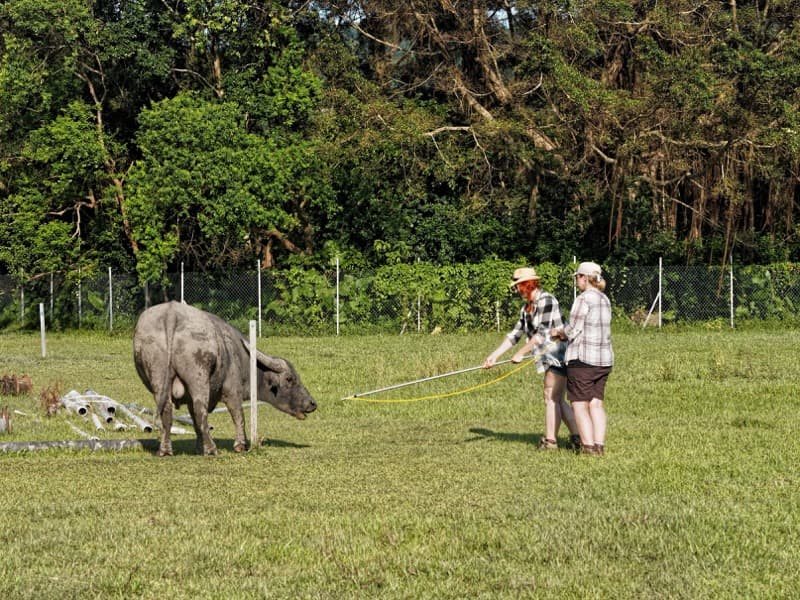Though water supplies have long been important in Hong Kong, it took some years to begin establishing the system of reservoirs and catchwaters etc etc.
Tower X, High Island Reservoir
Travelling along the south shore of High Island Reservoir, east of Sai Kung, you might barely notice Tower X. It looks like a concrete cylinder that’s mostly submerged by the water, perhaps as wide as a bus is long, topped by a concrete dome and narrow brim shaped like a hat a Catholic priest might wear.
Usually, Tower X – named after its designation on Water Supplies Department maps – is off limits to the public. But I’m visiting with a small team from the department, including Engineer Ir Patrick Fan. We walk along a footbridge, and enter through two steel doors. Inside, we cross the concrete floor to the edge of a rectangular opening, where I lean on a metal railing, and look down through the tower’s waterless interior.
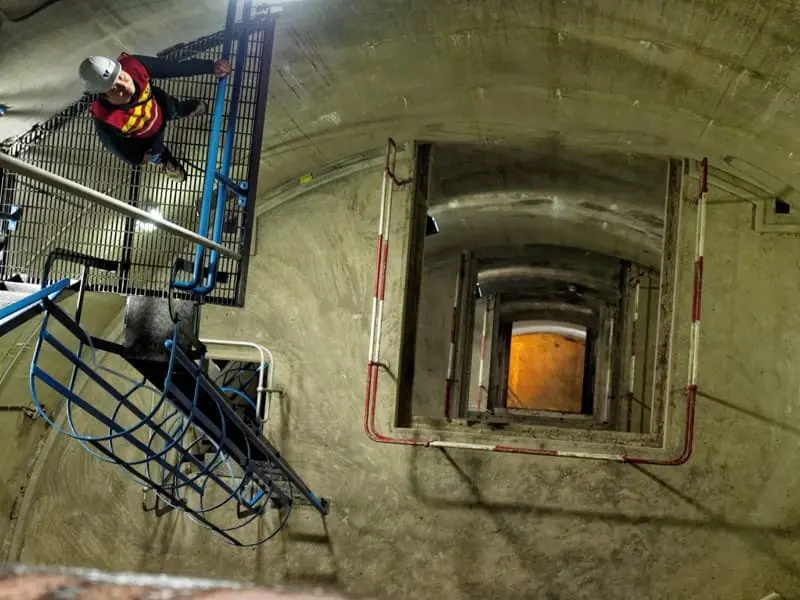
“It’s 60 metres to the bottom,” Fan says. Perhaps 60 metres doesn’t sound so high, but picture being 12 stories or more up a building, and looking down an empty lift shaft. There are lights below, yet even leaning – cautiously! – forward, I can’t clearly make out the base of the tower. Steep flights of metal steps lead down by the side of the shaft, reaching a succession of floors where there is little but massive water pipes – four in all, each 1.7 metres in diameter. These are the draw off pipes, taking water from the reservoir to a pipe leading through and around hills to a pumping station near Tai Po Market, and from there to the water network that supplies the thirsty city.
Perhaps it’s all too easy to turn on a tap, take a shower, and take the flow of water for granted. Yet Hong Kong’s water supply system has been vital to its development as a “world city”, whilst also impacting government coffers, transforming the landscape, making life easier and enriching outdoor leisure, and ensuring water security for decades to come. I’m visiting High Island Reservoir to learn a little of the system operates. Though I’ve hiked here before, it’s my first time to enter Tower X or any such intake tower. And a surprise awaits, deep within the massive east dam.
Water supplies playing catch-up with demand
Of course, water supplies have long been important in Hong Kong. But it took some years for them to become organised. Around the time the colony of Hong Kong was established, in 1841, simple bamboo aqueducts helped carry water from hillside streams to villages.
Initially, the colonial government seemed blasé about water, digging just four of five planned wells by 1852. It was spurred into action as the population rapidly grew, and in the early 1860s Hong Kong’s first major reservoir was built at Pokfulam. Even when newly completed, it could not meet demand – especially during the dry season in winter, and work soon began on an expansion project, completed in 1877. Again, growth in demand had outpaced supply, and the government continued on what would prove a long game of catch-up in trying to meet needs.
A larger reservoir was built at Tai Tam, southeastern Hong Kong. While water from Pokfulam Reservoir was piped around hillsides, relying on gravity, the Tai Tam site required a 2 metre high, 2.2-kilometre tunnel plus a pumping station – and the tunnel proved especially challenging. With physical labour combined with “elementary machinery”, only a fifth of its length was completed in nine months, prompting the government to bring in new machines from England to accelerate progress.
Construction of the Tai Tam project, from 1883 to 1888, cost HK$1.25 million – a huge sum compared with revenues for the government, which suffered a budget deficit. While it indeed boosted supply, and helped the city expand eastwards from Central, the water distribution system remained rudimentary – much as described in a report that noted only 1,877 private houses had running water by 1881, and there was so much dependence on carrying water in buckets that physical strength was an important qualification for cooks.
After the New Territories were leased to Britain in 1898, the government began building reservoirs in the hills near Kowloon. The economy improved, helping fund more reservoirs on Hong Kong Island – three at Tai Tam and one above Aberdeen, where the government also rebuilt a privately owned reservoir. However, reservoir construction remained expensive, and as the Shing Mun Reservoir was built in the 1920s and 1930s, workers living on site received a HK$6 per month food subsidy in lieu of overtime payments: a meagre reward given accidents with explosives, and health threats including malaria.
Cross-harbour water pipes were laid, too – allowing Shing Mun Reservoir to supply a service reservoir in the Botanical and Zoological Gardens, below the present day water fountain. Metered residential supplies became widespread.
But with Hong Kong’s annual rainfall fluctuating, water supplies were uneven. A severe drought during 1929 led to extended periods without tap water, and people queuing for water from steel tanks. Some water supplies brought by steamers from Shanghai, Fuzhou and Japan, and by barges from near Zhuhai. Businesses suffered, leading to tens of thousands of people losing their jobs, and more than 70,000 leaving Hong Kong.
There was an even worse drought during 1963 and 1964, with tight water restrictions and impacts reverberating though the economy. There were fights between women queuing at standpipes, bucket makers who profited by converting kerosene containers to water containers – so many of which were reportedly made they could have been stacked to a height of 650 miles. Poor hygiene resulted in 115 cases of cholera.
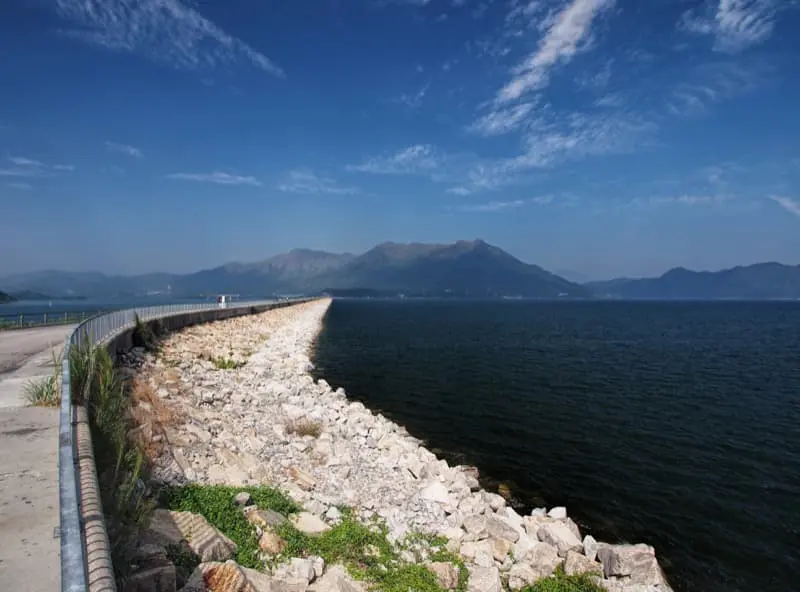
By this time, work was underway on building Plover Cove Reservoir – the world’s first reservoir built in a marine cove. The idea for it came to T.O. Morgan, the director of Water Supplies, as he swam in the cove east of Tai Po. The project was completed in 1974, and trebled Hong Kong’s water storage. Work was then underway on the world’s second reservoir in a coastal inlet: High Island Reservoir, which has a volume even greater than Plover Cove.
“Ironically, by the time this reservoir became operational in 1978, the government had abandoned its objective of achieving a high degree of self-sufficiency in water supply,” says Dr Frederick Lee, Director of the Water Governance Programme in the University of Hong Kong’s Faculty of Social Sciences. Water was being piped in from China, leading to Hong Kong now sourcing water from the Dongjiang and storing it in Plover Cove Reservoir, occasionally transferring some to High Island. “These reservoirs are a bit like water tanks,” notes Lee.
Hiking, biodiversity, and potential for ecological designs
But if you’re familiar with Plover Cove, High Island or many of the other reservoirs scattered across Hong Kong, you know they are very different to basic water tanks. They are lakes cradled amidst wooded hillsides, and may be wonderfully tranquil, as if far from the city. Given such settings, reservoirs and their surrounds are popular with hikers.
“Catchments and reservoir areas represent about 30% of 1,700 hikes we schedule each year for the group,” S.K. Shum, organiser of Hong Kong Hiking Meetup, says via email. “Many roads and paths by catchwater channels serve as links from one area of a reservoir to the next. This is especially true in Tai Tam, Aberdeen, Kowloon, Shek Nei Pui reservoirs. My hikes are usually involved with bush hiking up and down, and most entrances for my bush hikes are next to catchments as well.”
To help moderate water flows and reduce silting, forests were planted and protected in reservoir catchments. While enhancing their appeal for hikers like Shum, it also benefited plants and animals that suffered during centuries of deforestation, and a surge in tree felling during the Japanese occupation. “If you think of biodiversity in general, one of the best things that ever happened was the establishment of water catchments – with set aside land preserved from development,” says David Dudgeon, Chair Professor in Ecology & Biodiversity at the University of Hong Kong. “The landscape could revive from destruction in World War II. In the 1970s, country parks were established – basically because of water catchments, not really for conservation.”
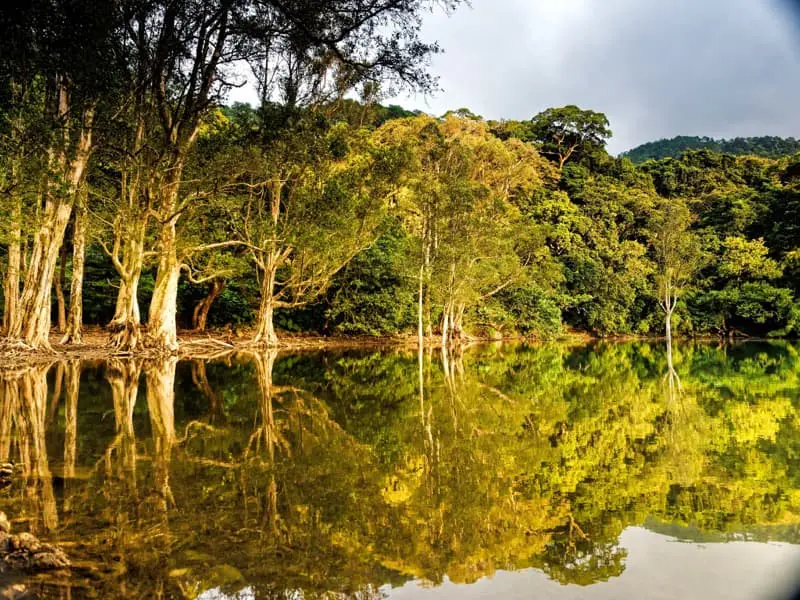
Most of the trees planted were not native to Hong Kong, like Taiwan Acacias and Brisbane Box that grew well on almost barren slopes but did not blend with local ecosystems. “The non native species have leaf litter that’s more resistant to decomposition,” says Dudgeon. “If you have native trees around streams, it’s better for the stream life, and with more aquatic insects you get more birds.”
There are some moves towards improving the balance, but these seem slow and cautious. In a terse email, Dr Billy Hau of Hong Kong University’s School of Biological Sciences comments, “Reforestation is positive but the lack of long term management in transforming the exotic trees to native forest becomes negative later – i.e. now.”
While catchwater channels aid hikers, Dudgeon notes that animals tend to fall into them. “There are quite a lot of records of snakes, frogs and other animals,” he says. “They can’t get out – and drown or starve. The channels could be re-engineered a bit, so less animals fall into them.”
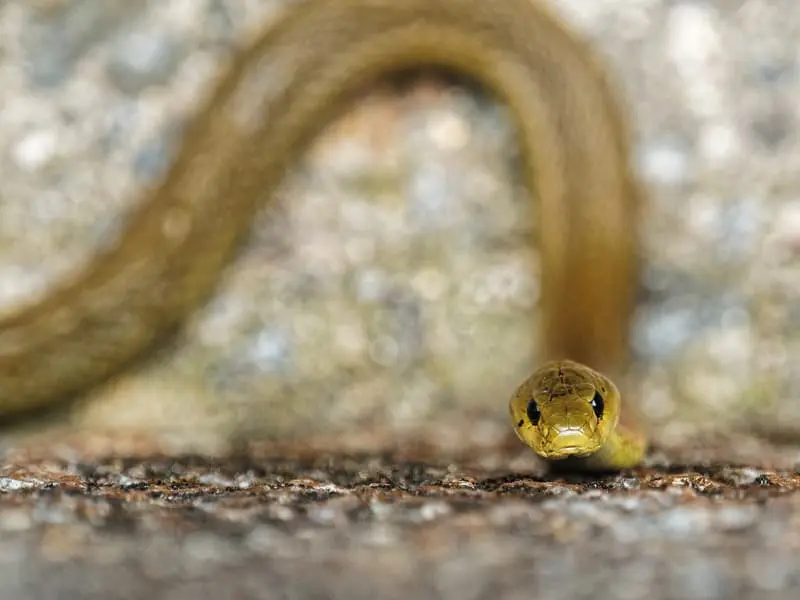
Kathy Daxon, Chairperson of Tai O Community Cattle Group, supports measures such as simple fencing along catchments, after incidents involving a cow and at least five barking deer that have become trapped in a catchment on west Lantau, with four of the deer dying or so badly injured they were euthanised. “We must do something to save the animals from this fate,” she says.
Dudgeon remarks that most dams are at least 100 metres above sea level, and, “In biodiversity terms, the lowlands are fairly trashed.” Streams are often channelised, prone to pollution, and the reservoir system captures so much water that few streams flow all year. We might think of not capturing all water, allowing ecological flows so there is always some flow downstream, to maintain ecosystems. We’ve done some work on this in my lab, and found it can help, with a bigger effect in the dry season.”
Dr Ng Cho-nam agrees. He’s a colleague of Frederick Lee in Hong Kong University’s Faculty of Social Sciences, with research interests including environmental policy, and likewise advocates ecological flow – noting that this practice is adopted in China. “Our river management is like one river, two systems,” he says. “In the system run by the Water Supplies Department, they take water away from rivers. Lower down, the Drainage Services Department drains away water – making channels wider, deeper, straighter. So, rivers may have no water.”
There has been some transition to more ecological designs for lowland river channels, but Ng would also like to see the Water Supplies Department adopt a new approach to managing reservoirs, so they are not just single use, like water tanks. “I’m trying to convince them to realise they can serve multiple functions – like landscape, ecology, etc. You go to reservoirs in the UK, and there are ducks and swans, people windsurf. In Hong Kong, they’re empty. Twenty years ago, I helped review a consultants study on multiple uses, but it was shelved. The WSD says: ‘We provide safe drinking water.’”
Regional pressures and higher tariffs needed
While Ng waxes lyrical about waterfowl and windsurfing, Lee deals more in facts and figures on water, even pondering why Hong Kongers use over twice as much water for flushing toilets as people in Macau. He has a strong focus, too, on the future of Hong Kong water supplies. “In recent years, there have been assessments regarding to what extent we can extend the catchment area, and become less dependent on Dongjiang water,” he says. “Singapore has essentially transformed its entire area into a catchment, but while it is technically possible to turn urbanised areas of Hong Kong into catchments, you need care not to mix sewage pipes and drainage pipes, and the government believes there’s a limit to extending catchment areas.”
Lee produces a table showing allocation of Dongjiang water to various cities, with Hong Kong allocated around 115% of the water actually consumed. It helps that consumption has fallen a little since the early 1990s, with manufacturing moving out. “In the future, consumption should level off, along with the population,” he says.
Even so, Hong Kong should not take Dongjiang (East River) water for granted. There are rising pressures on water in the region – reflected in plans for a scheme to transfer water from the West River to eastern areas of the Pearl River basin, to serve parts of Guangzhou and nearby cities, perhaps including Shenzhen. “This will be very expensive,” says Lee – who notes that every three years, the price Hong Kong pays for water from the Dongjiang goes up.
Hong Kong is now building a desalination plant at Tseung Kwan O, and Lee considers that by 2020, Hong Kong could use desalination as the primary water source, as it should cost less per cubic metre than from the Dongjiang. Yet he still believes we should protect the reservoir system, to maintain as stable a supply mix as possible.
Although the Water Supplies Department receives complaints that water is too expensive, Lee has expressed the opposite view. Does he still believe Hong Kong’s water is too expensive? “Oh definitely,” he says. “It’s now about 50% subsidised, sending the wrong signal to consumers. I’ve written of the need to raise tariffs.”
Aiming for equipment operating round-the-clock
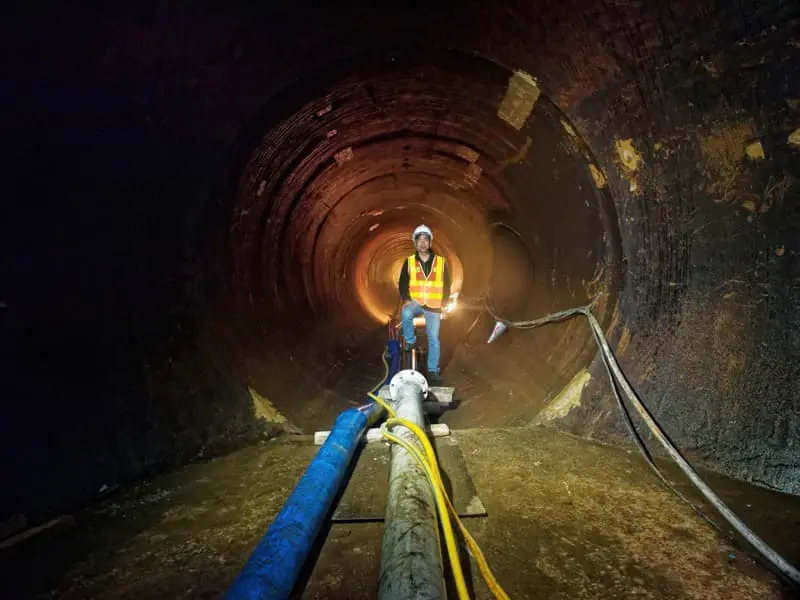
Even as debates swirl about pricing and future sources, Patrick Fan is among staff aiming to ensure the Water Supplies Department achieves its mission of maintaining a reliable and safe water supply. He’s been with the department 24 years, and his responsibilities span a swathe of the eastern New Territories, including service reservoirs, two treatment works and High Island Reservoir, mainly handling any equipment or supply problems.
“We aim to keep equipment operating 24 hours a day,” he says. “If we can’t repair something within eight hours – which is the normal supply level in a service reservoir, we would have no choice but to inform the public about the problem. But mostly, we repair within this time.”
Such constraints can make the work challenging. Fan is always on call, at times having to head out in bad weather late at night. Sometimes, he and his colleagues have fixed one problem, only for a second to arise, also needing time to diagnose the issue and call in a mechanic or electrical engineer to perform the repair – with a service reservoir level dropping all the time. In such cases, he might have to see if water can be diverted from elsewhere, or ensure a water tanker is ready, so if the reservoir runs dry it can deliver water to a neighbourhood.
There are remote facility for controlling water flows via computer monitors. At times, though, there are issues like signal failures during lightning storms. Teams are dispatched to check the problems. “Sometimes, they may stay overnight to manually open and control valves,” says Fan.
Into the dam
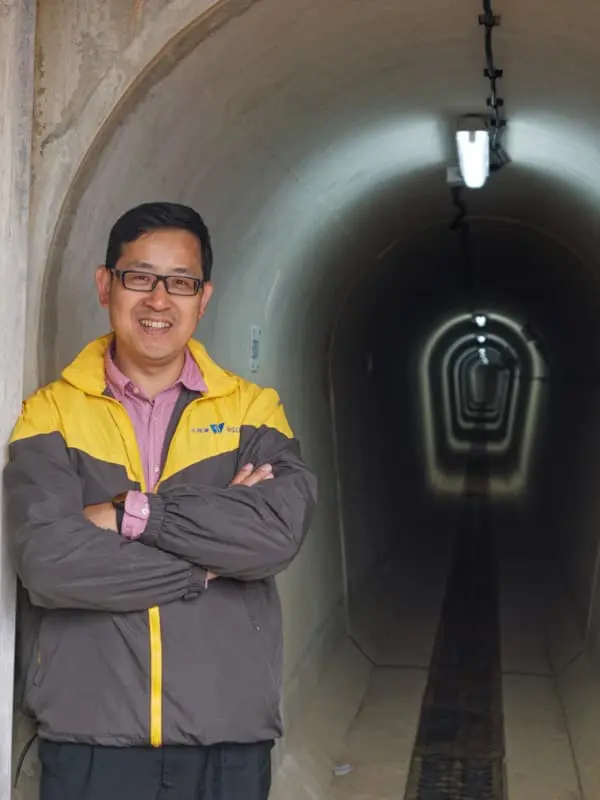
After leaving Tower X, Fan and colleagues take me to the east dam of High Island Reservoir. This is set in one of Hong Kong’s wildest stretches of coastline, and blocks a channel that once separated High Island from the Sai Kung Peninsula. We head down near the shore, to walk on top of the coffer dam that was built first – along with a “sister” dam to the west, so the channel could be emptied, allowing for construction of the two main dams.
Beside us, a layer of dolos blocks guards against damage by the sea – especially when mighty waves are driven onshore by typhoons. Each of the dolosse is shaped rather like a capital H, with one side turned so it’s at right angles to the other, and piled together they loosely interlock and can dissipate the power of waves. “They made around 7000 25-tonne dolos blocks,” says Fan. They’re so massive that just one could be carried by a truck. I stand on one, look down through a layer maybe five or six blocks deep. “Every one is numbered,” Fan remarks, pointing to a small label that refers to an item in a ledger.
Walking to the main dam, we pass jointed rock that formed in the last great eruption and collapse of a supervolcano, adding to the grandeur of the scene. The 70-metre high dam soars above us. Its steep slope is covered in broken rocks, and Fan tells me even if one falls down it must be weighed and catalogued, to help monitor safety.
There’s a door, and we enter a passageway so narrow we walk single file, moving straight ahead, then turning left, in the depths of the dam. Solar powered fluorescent strips light the passage; at intervals there are short water pipes around the width of my arm: measuring equipment can be fitted to these, to check if there is internal leaking.
We turn left, to a side room with bare concrete walls, ceiling and floor, and what looks like a squat oil barrel suspended on a metal frame, above a circular hole leading to somewhere below. “This is the most important part of the dam,” says Fan. “It’s an inverted pendulum.”
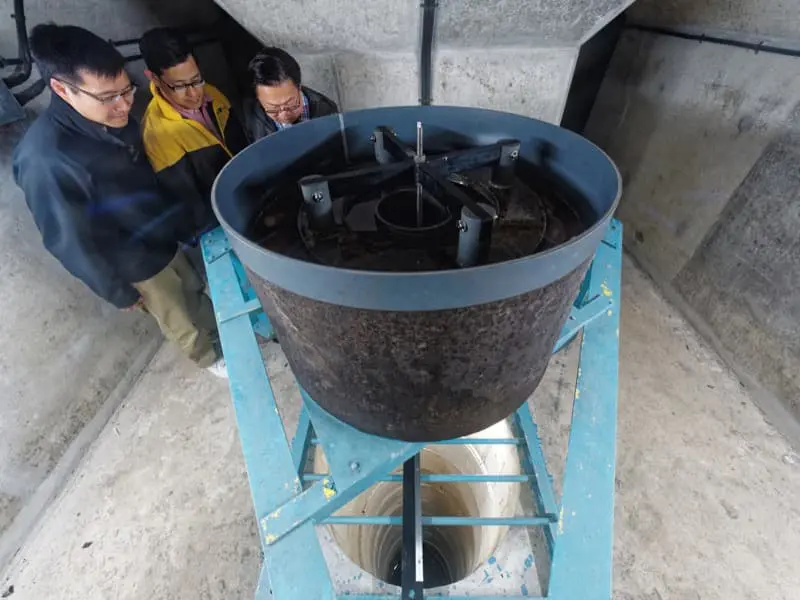
While I think of pendulums as swinging to and fro, as in a grandfather clock or terrorising the protagonist of an Edgar Allan Poe story, this one looks utterly stationary. There’s a wire from the middle of the barrel, down to an anchor point within the hole. And in the barrel, it’s attached to a float suspended on oil. Tap the float, and it moves slightly sideways, then returns to its place in the centre of the barrel. Should the dam become distorted, the float will move off centre, signalling there is a problem.
Right now, though, all is well. The dam remains as solid as when first built around 40 years ago, set to long continue playing a key role in supplying each of us with that precious yet under-appreciated resource – clean, fresh water.
[First published in the South China Morning Post magazine.]
Early warnings of climate change
While climate change resulting from human activities might seem a new-fangled concept, there have been on-point predictions dating back many years.…
Ignoring Science Makes Global Climate Disaster as Inevitable as Titanic Submarine Implosion
Climate change has been prominent in worldwide news this summer (2023), notably as we have just lived through the hottest week…
Have you been bullied into health? Fear, quackery and Covid
So here we are with our modern-day wonder, the internet – where even with a smartphone, you can search for and…
Never mind the antimask-o-sphere. Science shows face masks help reduce Covid spread
Just had one of those silly Twitter “conversations” with someone who had position so fixed, impossible to change with facts. Yeah,…
A Covid scrapbook: snapshots from the crazy pandemic
I’ve read accounts of the Spanish Flu, which was the last major pandemic, mainly in 1918 [so over and done with…
Highly pathogenic bird flu variants mostly evolve in intensive poultry farming
Highly pathogenic bird flu variants evolve from regular, low pathogenic, bird flus, within intensive poultry farming.
Keep Your Underpants Duck Taped and Air Clean as Covid Wild Ride Continues
We’ve learned a lot about Covid, even developing vaccines. Yet Covid remains an issue, no matter how much we might wish…
Covid is airborne so ventilation and air filtration are important
Since early in the pandemic, I’ve been seeing scientists arguing Covid is airborne, even with hashtag #covidisairborne – including to counter…
Long Covid – info and links indicating major impact
Evidence is snowballing that Long Covid is also a serious issue, even affecting people in whom the disease initially appeared mild.
Perhaps Covid arose through lab leak of tweaked bat Coronavirus
Maybe humans tweaked bat coronaviruses in gain of function experiments, inadvertently creating Covid thro lab leak.
The Covid Conundrum: Endless Lockdowns, Let It Rip … or What?
Covid is airborne, which means that much as unprotected sex is a risk for HIV, unprotected breathing might result in Covid.
Science shows Covid including Omicron is Really Not the Flu
Some of the science showing Covid including Omicron is a huge issue; and one that looks set to be with us…
“Alarmist” Covid predictions outperform Covid deniers’ soothsaying
The disinfo downplaying Covid is often from rightwing, mainly money-minded folks who perhaps don’t care too much about actual people.
Covid virulence, vaccines and variants
Science can provide some insights into what may happen with Covid, along with ways to limit its impacts.
We’re in the Covid Era for the Long Haul
We’re in this for the long haul, with the virus like a relentless, invisible foe, ready to exploit errors, slip through…
My Strange n Surprising Summer Staycation with Cellulitis
rom quick pricking by unseen marine creature, to intense fever, and hospital stay for an infection deep within the skin.
Covid virulence, vaccines and variants
[Written for South China Morning Post on 6 January 2021] In January last year, as reports were emerging of the new…
The Viral Time Bomb – Pandemic of Our Time
Guan Yi, director of the State Key Laboratory of Emerging Infectious Diseases at Hong Kong University, has extensive experience of viruses;…
From China With Fear: the Wuhan Coronavirus Won’t Kill Us All
As news of Wuhan coronavirus emerges, evolutionary biology suggests potential for a pandemic, not killing high percentage of people.
Fightback Needed as Science and Life Support System Under Attack
Environmentalism is under assault; yet this planet is the only home we have; providing our food, air, water… It’s our life…
Hong Kong Belching Buffaloes n Bubbling Paddies and the Mystery Methane Rise
Prof Euan Nisbet leads a science team to Hong Kong in quest to help find why levels of potent greenhouse gas…
Fusion Power and Human Failings
Several projects are underway in the quest to discover ways to harness fusion power, which is akin to a holy grail…






